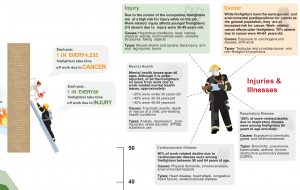Reducing fires and saving lives is a mandate for all Fire Services. Globally, many departments have implemented door to door campaigns to educate their citizens on fire reduction and safety (TriData, 2009). However, focusing on an entire community is expensive, time consuming, and overall, an inefficient use of limited resources. A 2007 TriData report on best practices in residential fire safety in England, Scotland, Sweden, and Norway identified that “of all the best practices identified in this study, one stands out. To reduce fire casualties in the home, the British fire service is visiting large number of high-risk households [emphasis added] to do fire safety inspections and risk reductions, especially to ensure they have a working smoke detector” (TriData, 2007, p.vi). Similarly, in the publication, the Reduced Frequency and Severity of Residential Fires Following Delivery of Fire Prevention Education by On-Duty Fire Fighters: Cluster Randomized Controlled Study Clare, Garis, Plecas, and Jennings (2012) reviewed best practices from other countries on residential fire safety and concluded that “targeted home visits have produced promising results examining a range of outcome measures, from reduction in rates of fires and fire-related casualty through to increased presence of working smoke alarms when residences were audited” (p. 123).
Centre for Public Safety and Criminal Justice Research
Related posts


Driving and Personal Electronic Use
March 24, 2012
The Essentials of Leadership in Government: Understanding the Basics
February 23, 2018
Firefighter Illness, Injury & Death in Canada, 2006–2015
October 25, 2018
